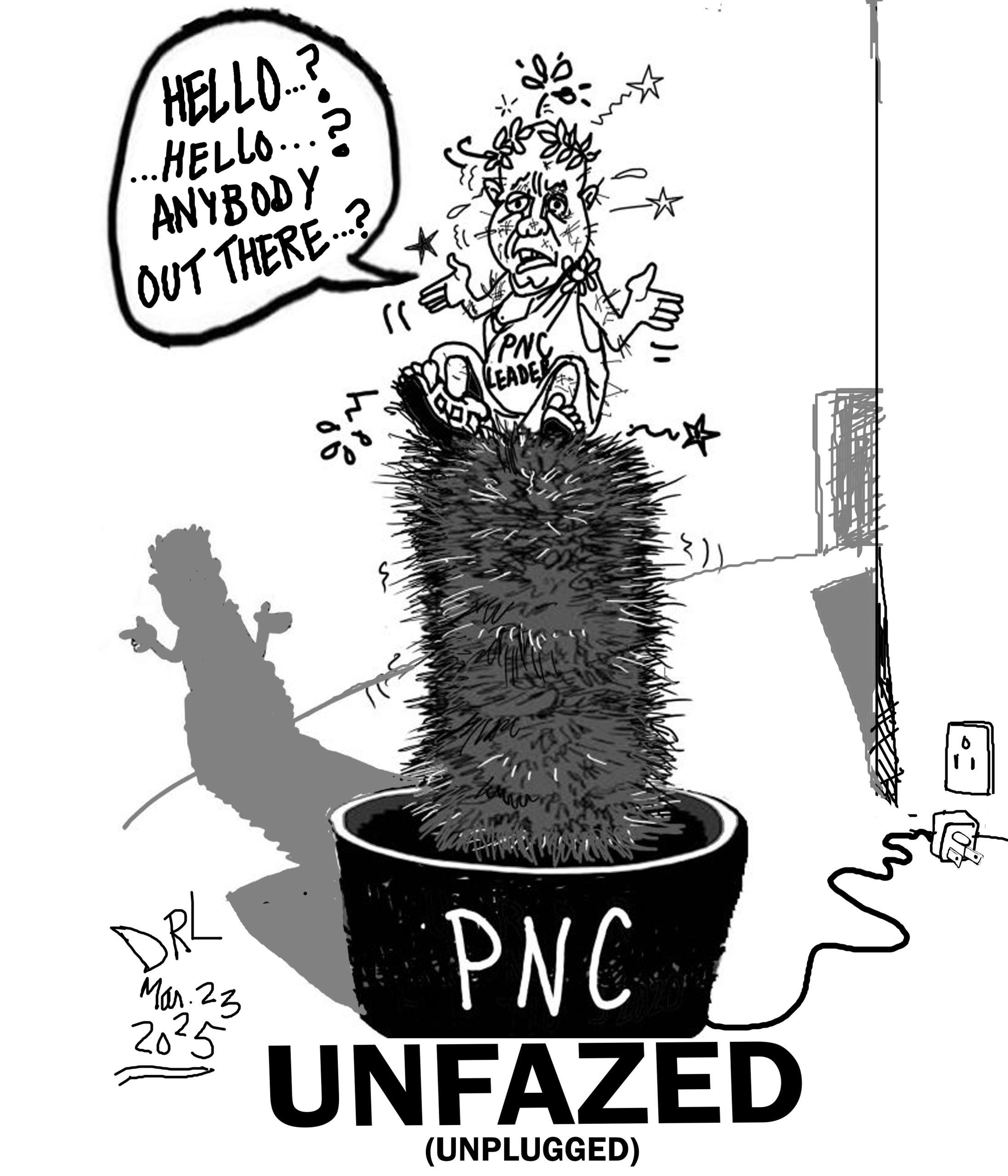Latest update March 27th, 2025 8:24 AM
Latest News
- Jamaica rebuffs Rubio push against Cuban doctors
- Canadian company to pay over US$3.8M to local titleholders to fully acquire second gold project in Guyana
- Over 140,000 displaced in a week in Gaza amid renewed Israeli attacks: UN
- Businessmen complain of foreign currency shortage
- PPP disrupts meeting with Mohamed and Berbice residents
Guyana starts out with a loss
Feb 25, 2018 Features / Columnists, Peeping Tom
The risks that ExxonMobil took during the exploration phase have become the justification for the generous terms and concessions granted to that company, under the 2016 agreement. It is argued that if the company did not find oil, they would have had to bear the full costs associated with exploration.
What persons making those arguments do not disclose is that when oil is found, all those costs are recoverable. Exxon, in fact, even before it has begun production of oil, has billed Guyana to the tune of $US460M in pre-contract costs.
Even before Guyana has received a cent in oil revenues, it is running a liability for the costs associated with the “risks” which Exxon was taking since 1999. Exxon was therefore merely operating under a conditional risk. If it did not find oil, it would have had to bear the costs of exploration, but once it finds oil, that money now becomes payable by the government.
But why should this be? Why should a small nation, now entering the oil industry, have to carry on its books, even before oil revenues are received, the costs of exploration or what is now being referred to as pre-contract cost?
Pre-contract cost includes contract costs, exploration costs, operating costs, service costs, general and administrative costs and annual overhead charges as those terms are defined in the 1999 Petroleum agreement.
Guyana starts out with a loss. Guyana has to pay Exxon US$460M before it has received a blind cent from that company. And this sum only covers up to 2015. This sum does not cover the 2016 costs and beyond which will also form part of cost recovery.
The Petroleum Sharing Agreement states that the pre-contract cost “shall include four hundred and sixty million, two hundred and thirty seven thousand and nine hundred and eighteen United States Dollars (USS 460,237,918) in respect of all such costs incurred under the 1999 Petroleum Agreement prior to the year ended 2015”. To this will be added costs between January 1, 2016 and the effective date of the 2016 contract.
Production is not expected to begin until 2021. Therefore, Guyana can conceivably end up owing Exxon as much as US$1B by the time production begins.
In light of this, Guyana ought not to have gone for a 75% cap on cost recovery. It should have spread its liabilities out so that cost recovery, at best, would have been capped at 50%, given that this is a long-term agreement.
Annex C of the Agreement provides for cost recovery for categories of costs which do not require, (DO NOT REQUIRE) further approval of the Minister. These costs include: the salaries and wages of employees of the Contractor (Yes, Guyanese are paying those fat wages and salaries of the employees of Exxon engaged in petroleum operations). Cost recovery also includes holiday, vacation, sickness allowances and disability payments of employees. It covers the travel, personal and transportation costs of employees, equipment and supplies and equipment. It covers, also, third and affiliated parties’ costs and legal fees.
All of this will eat into cost recovery – all the more reason why these costs should have been spread more evenly over the life of the investment. The initial outlay to commence production is going to be high but as production begins, these costs will begin to reduce relative to the cost oil. As such, it would have made practical sense to have asked for a low cap on cost recovery, especially considering that Guyana will be starting in the red.
However, after examining the contract, the APNU+AFC government is satisfied. It says that the contract is final. And guess what, it means it is not going to renegotiate the contract even though its own adviser had indicated that contracts can be renegotiated.
When a government can take such stand, then Exxon has no reason to worry. It is under no pressure to come back to the negotiating table.
Guyana is bonded, our hands and feet shackled with this contract, for the next forty years.
And guess what, the Guyanese people will sit back and take this just as how they took the forty-year monopoly on overseas calls which was granted to the Guyana Telephone and Telegraph Company. And just as how they took the OMAI deal which has seen hundreds of thousands of ounces of gold shipped out of Guyana while the nation remains in poverty.
Exxon Mobil holds 55% of Guyana’s petroleum blocks. This is not far from monopoly status. They will here for the next forty years. Exxon will own Guyana within the next forty years.
Share this:
- Click to print (Opens in new window)
- Click to email a link to a friend (Opens in new window)
- Click to share on Facebook (Opens in new window)
- Click to share on WhatsApp (Opens in new window)
- Click to share on Twitter (Opens in new window)
- Click to share on Pinterest (Opens in new window)
- Click to share on Pocket (Opens in new window)
- Click to share on Tumblr (Opens in new window)
- Click to share on Reddit (Opens in new window)
- Click to share on LinkedIn (Opens in new window)
Related
Similar Articles

The Glenn Lall Show|| March, 17th, 2025
Follow on Tik Tok @Glennlall
THE BLUNT OF THE DAY

Sports
Mar 27, 2025
2025 C𝐨𝐦𝐦𝐢𝐬𝐬𝐢𝐨𝐧𝐞𝐫‘𝐬 𝐓𝟐𝟎 𝐂𝐫𝐢𝐜𝐤𝐞𝐭 𝐓𝐨𝐮𝐫𝐧𝐚𝐦𝐞𝐧𝐭… Kaieteur Sports- The Tactical Services Unit (TSU)...Features/Columnists
The U.S. pressure on Venezuela may backfire on Guyana
Peeping Tom… Kaieteur News- The world is full of unintended consequences, those sly little gremlins that slip into... more
The Caribbean: Destined to Grin and Bear the Consequences of Its Self-Created Vulnerabilities?
By Sir Ronald Sanders For decades, many Caribbean nations have grappled with dependence on a small number of powerful countries... more
Publisher’s Note
Freedom of speech is our core value at Kaieteur News. If the letter/e-mail you sent was not published, and you believe that its contents were not libellous, let us know, please contact us by phone or email.
Feel free to send us your comments and/or criticisms.
Contact: 624-6456; 225-8452; 225-8458; 225-8463; 225-8465; 225-8473 or 225-8491.
Or by Email: [email protected] / [email protected]
Weekend Cartoon















